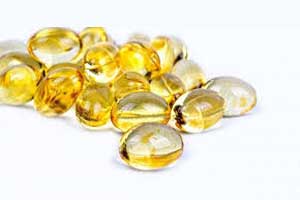- Home
- Editorial
- News
- Practice Guidelines
- Anesthesiology Guidelines
- Cancer Guidelines
- Cardiac Sciences Guidelines
- Critical Care Guidelines
- Dentistry Guidelines
- Dermatology Guidelines
- Diabetes and Endo Guidelines
- Diagnostics Guidelines
- ENT Guidelines
- Featured Practice Guidelines
- Gastroenterology Guidelines
- Geriatrics Guidelines
- Medicine Guidelines
- Nephrology Guidelines
- Neurosciences Guidelines
- Obs and Gynae Guidelines
- Ophthalmology Guidelines
- Orthopaedics Guidelines
- Paediatrics Guidelines
- Psychiatry Guidelines
- Pulmonology Guidelines
- Radiology Guidelines
- Surgery Guidelines
- Urology Guidelines
Low Vitamin D levels may lead to serious fractures in kids

According to a new research, lower vitamin D levels in children are associated with more severe fractures which may require surgery.
It further found that supplementation compliance improved when vitamin D blood levels were regularly obtained by specially drawing blood samples.The new study has been published in the prestigious Journal of Pediatric Orthopaedics .
The American Academy of Pediatrics recommends that infants and children maintain vitamin D concentrations at > 20 ng/ml. The laboratory values consider > 30 normal, and the Endocrine Society advocates for values between 40-60 ng/ml. Research by Dr. Minkowitz also advocates for values of > 40 ng/ml.
No other studies to date have examined pediatric vitamin D supplementation compliance and how it relates to serum testing, fracture severity, age, body mass index (BMI), and sex. A recent study found that 1 in 3 children with a fracture can be vitamin D deficient.
“As a pediatric orthopedic surgeon, I see hundreds of bone breaks ranging in severity each year,” Dr. Minkowitz said. “Vitamin D plays an important role in the regulation of calcium and skeletal growth and strength, and this novel study suggests that if pediatric patients maintain a higher vitamin D level, they may be protected against more severe fractures. In addition, when children get their vitamin D levels tested with a blood draw, they take compliance more seriously and are more adherent with supplementation. I suggest all pediatric patients have their vitamin D levels tested regularly and those with low levels begin supplementation immediately.”
For the study, Dr. Minkowitz and her team assessed 1,818 pediatric patients at her practice between ages 2-18 who had fractures. Of these patients, 872 (48 percent) had a baseline vitamin D level obtained within three weeks of presentation. Four hundred and sixty five of those patients began taking vitamin D with calcium supplements via gummy/candy medications, drops, or pills.
Compliance was assessed at each visit. “Compliant” was defined as taking vitamins a minimum of four days per week during the period of fracture treatment. Compliance duration was an average of two months with a mean of 8.14 months in the 465 patients who began taking vitamin D after their levels were tested post-fracture.
“We found that the more severe the fracture, the better the compliance was,” Dr. Minkowitz said. “We believe patients who had their blood drawn were more compliant because they took it more seriously after being stuck with a needle.”
Age at time of fracture was found to be associated with patient compliance. For every one-year increase in age, a patient was nine percent more likely to be compliant (p < 0.001). The mean age of compliant patients was 10 years old, older than the mean age of noncompliant patients, which was 8 years old (p< 0.001).

Disclaimer: This site is primarily intended for healthcare professionals. Any content/information on this website does not replace the advice of medical and/or health professionals and should not be construed as medical/diagnostic advice/endorsement or prescription. Use of this site is subject to our terms of use, privacy policy, advertisement policy. © 2020 Minerva Medical Treatment Pvt Ltd